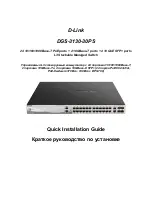
1-24
Configuring PVCs
1.7
Traffic Policing (Usage Parameter Control)
Traffic policing, also known as Usage Parameter Control (UPC), is a method
of assessing the cells entering the switch for conformance with pre-estab-
lished traffic bandwidth contracts. Those cells that exceed the specified con-
tract are “tagged” or “dropped,” depending on what is defined in the
contract. This ensures that the connections with reserved bandwidth are not
exceeding their reservations. Cabletron Systems’ switches use a combination
of “leaky bucket,” or Generic Cell Rate Algorithm (GCRA) hardware in the
switch fabric and user-configurable parameters in AMI to perform these
policing functions.
1.7.1
Setting the CLP Bit
First, it is important to understand the concept of tagging and dropping.
Each ATM cell has a Cell Loss Priority (CLP) bit which indicates if the net-
work can drop it under congested conditions. When the CLP bit is set to 0 (or
CLP = 0), the cell will be assessed for compliance with traffic parameters. If
the traffic parameters dictate that non-compliant cells should be “tagged,” the
CLP bit will be set to 1 (or CLP = 1), which means that upon experiencing con-
gestion further in the network, these CLP = 1 cells will be dropped (because
you cannot tag them again).
1.7.2
Leaky Bucket Algorithm
The next important concept is the leaky bucket algorithm. Leaky buckets are a
mechanism by which cells entering the switch fabric are monitored for com-
pliance with UPC traffic contracts that have been negotiated at connection
set-up time. Before the leaky buckets are discussed, it is important to under-
stand the parameters that are being measured by the buckets. They are as fol-
lows:
• Peak Cell Rate (PCR) - the maximum number of cells per second.
• Cell Delay Variation Tolerance (CDVT) - the tolerance for variation in
the inter-arrival time of these cells, or the amount of jitter that can be
accepted by the network.
• Sustainable Cell Rate (SCR) - the average rate of cell transmission for
this connection, taking bursting into account.
• Maximum Burst Size (MBS) - the maximum amount of cells that can
be transmitted at the PCR.
Summary of Contents for MMAC-Plus SFCS-1000
Page 1: ...ATM Switch Configuration Manual...
Page 2: ......
Page 6: ...Notice iv...
Page 22: ...xx PREFACE...
Page 50: ...1 28 Configuring PVCs...
Page 72: ...2 22 Configuring a Classical IP ATM Network...
Page 120: ...5 12 DS 3 Configuration...
Page 130: ...6 10 E 3 Configuration...
Page 326: ...C 22 AMI Operation Commands...
Page 360: ...D 34 AMI Statistics Commands...
Page 382: ...F 10 ForeThought PNNI...
Page 404: ...g 22 GLOSSARY...
















































